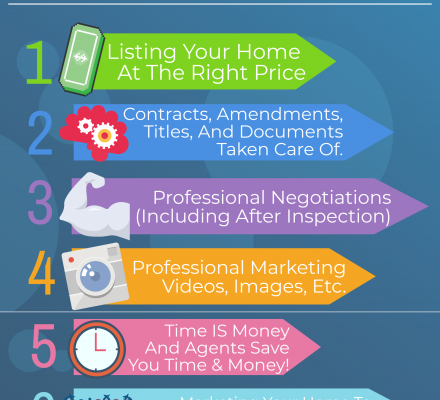Depreciation is one of the most attractive benefits of real estate investing. It allows you to significantly reduce your tax liability by offsetting your rental income. This means you can keep more of the income you generate from your property.
What makes depreciation even better is that it has no negative influence on your cash flow. It simply lets you pay it off your taxes; think of it as free money every real estate investor gets. In fact, depreciation is one of the largest tax deductions available to real estate investors.
Definition of Depreciation
Simply put, deprecation is the reduction in an asset’s value over time due to typical wear and tear. When viewed from a tax standpoint, the Internal Revenue Service enables businesses to subtract the fair value of certain assets over a period of time, known as useful life. This is in contrast to most business expenses that are typically deducted in the same year they occur.
For instance, if you purchase a $2000 laptop for business purposes, you will be unable to deduct the original purchase amount from your table income in that same year. Rather, the IRS specifies that the laptop has a “useful life” of five years. This means you will need to calculate the original price of the laptop and the number of years to get the deductible.
Learn more about the tax benefits depreciation has on a real estate investment.
What Is Rental Property Depreciation?
Regarding depreciable assets in a rental property, you have the property itself and any capital expenses—albeit with some conditions.
According to the IRS, residential properties have a useful life of 27.5 years. While most residential buildings remain in service after the allotted time, this recommendation can benefit real estate investors.
With capital expenses, they need to have a useful life of more than a year. Capital improvements include roofing, appliances, fencing, flooring, and more. IRS Publication 527 lists the depreciable capital improvements and expenses and their useful life.
How to Calculate Rental Property Depreciation: Start and End
Now that we understand what depreciation is and what items should be depreciated, it is important to highlight when depreciation should start and end.
Depreciation on a rental property typically begins the month the asset was placed into service. Depreciation ends in the month when the property is converted to personal use, destroyed, sold, or in the case of a building, has reached its 27.5 years of useful life.
For instance, if you purchase a building in May and then spend three months renovating and repairing it before you can begin listing the property for rent in September. Since it was placed into service that month, you can begin deducting depreciation in September.
Calculating real estate depreciation for capital expenses is slightly more complicated, as you can either begin depreciation in the quarter or half-year you made the expense.
Steps on How to Calculate Depreciation on Rental Property
Since we understand real estate depreciation, we can now discover the steps to calculating it. However, before doing this, it is important to comprehend various ways to calculate depreciation. While the rules have been updated over time, the last change was back in 1987, which leaves us with the Modified Accelerated Cost Recovery System MACRS.
The IRS utilizes two methods to determine depreciation in the General Depreciation System GDS of MACRS. This depreciation system is the most used one; however, you can also use ADS Alternative Depreciation System. To make things simpler, we will focus on just GDS.
Discover how to earn passive income by investing in multifamily units.
The first method is declining balance, typically used for assets that depreciate over 5, 7, or 15 years. This method covers almost everything except the rental property. With this system, a MACRS percentage table is utilized to determine the amount of depreciation annually. You should note that using this method tends to accelerate depreciation since the biggest deduction happens in the first years.
The second system is straight-line depreciation which is used to depreciate buildings and make additional improvements to the building, such as HVAC systems, roofs, and more. When you use this method, you simply take the same depreciation value every year, with the first and last years being exempt.
The first depreciation type is on the property’s structure and building. This can be calculated annually beginning from the year you purchased the property. Each year gets the same value in depreciation apart from the first and last years.
You can use the 7 steps listed below to calculate the depreciation of a rental property. These steps should be followed for any improvements made to the property, so long as they follow the 27.5 depreciation timeline. There is one difference; however, steps 2 to 5 do not apply to these improvements. Rather the costs of said improvements should be added to the cost basis.
Calculate the Property’s Purchase Price
The first thing to do is to calculate how much you purchased the property for. This can be as simple as checking the purchase paperwork for the amount.
Subtract the Price of the Land
Since land cannot be depreciated, you will have to remove its value from the purchase price. To do this, you will require an appraisal. Alternatively, you can find out the value of the land by checking the property’s tax record. The amount in the property’s tax record might not match the amount you paid for the land, so you will have to calculate the price of the land using percentages.
For example, if the property’s tax record states that the land is worth $22,500 and the building is worth $125,000, then you can surmise that the land value is 18% of the property’s price ($22,500 / $125,000).
Now, if you purchased the entire property for $203,000, the land’s value is 18% of the purchase price, which is $36,500 (18% of $203,500), while the actual structure is worth $166,460.
Add the Basis for Some Fees and Costs
Some fees and costs incurred during the property purchase process need to be included in the cost basis. These fees can include transfer fees, title insurance fees, surveys, legal fees, and more. All of these are added to the total value of the structure.
Add Any Property Improvements to the Basis
You should add the cost of any improvements or renovations you make to your purchased property before putting it in service into the bases. As stated earlier, these improvements need to have a useful life of at least one year before they can be included in the basis.
Once the property is in service, you can track the depreciation on improvements separately. For example, if you performed significant renovations on the property, or placed a new roof, then you need to add these expenses to the cost basis.
Subtract Cost Recovery From the Basis
While this step isn’t typically used, it is still important as it covers any payments you get as part of the real estate purchase process. This can include payments for acquiescing to an easement and insurance payments.
These payments must be subtracted from the cost basis. What you have left after this step is your final cost basis. This amount should be kept for your records so long as you maintain ownership of the rental property.
How Does Depreciation Affect Your Taxable Income
You should note that depreciation can be seen as a tax deduction just as you would view operating expenses. One difference, however, is that you don’t pay any of the depreciation at the time— unless you sell the property.
However, since it is a tax deduction, you have to subtract depreciation from your rental property’s income. For instance, if your rental property generates a net income of $10,000 and you have depreciation worth $6,000, your net taxable income is $4,000.
In most instances, especially in the first couple of years, this depreciation deduction can help completely offset your rental property’s net income. In certain instances, it can even help lower your taxable income to zero.




